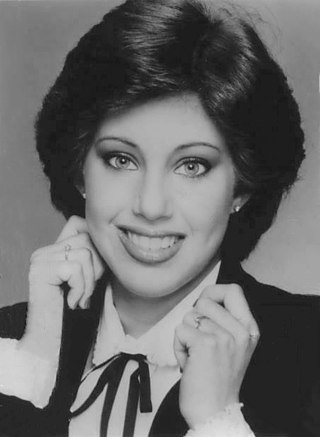Linda Fratianne
American figure skater From Wikipedia, the free encyclopedia
Linda Sue Fratianne (born August 2, 1960) is an American former figure skater known for winning two world-championship titles (1977, 1979), four consecutive U.S. championships (1977–1980) and a silver medal in the 1980 Winter Olympics.
| Linda Fratianne | ||||||||||||||||||||||||||||||
|---|---|---|---|---|---|---|---|---|---|---|---|---|---|---|---|---|---|---|---|---|---|---|---|---|---|---|---|---|---|---|
 Fratianne in 1979 | ||||||||||||||||||||||||||||||
| Born | August 2, 1960[1] Northridge, California, U.S.[1] | |||||||||||||||||||||||||||||
| Height | 153 cm (5 ft 0 in)[1] | |||||||||||||||||||||||||||||
| Figure skating career | ||||||||||||||||||||||||||||||
| Country | United States | |||||||||||||||||||||||||||||
| Skating club | LAFSC[1] | |||||||||||||||||||||||||||||
| Retired | 1980 | |||||||||||||||||||||||||||||
Medal record
| ||||||||||||||||||||||||||||||
Career
Summarize
Perspective
Throughout her figure-skating career, Fratianne was coached by Frank Carroll.[2]
Fratianne became the first female skater to land two different types of triple jumps (toe loop and Salchow) in her free-skating programs in 1976 at the U.S. National Championships, finishing in second place. The next year, Fratianne won the gold medal.[2]
At the World Figure Skating Championships in Tokyo in 1977, Fratianne won her first world title by upsetting the favorite, Anett Pötzsch of East Germany, despite having fallen following a triple-Salchow jump in her free-skating routine.
In 1979, Fratianne regained her world title, which she had lost to Pötzsch in 1978 in Ottawa, Canada.
Fratianne's chief rivals were Pötzsch (East Germany), Emi Watanabe (Japan) and Dagmar Lurz (West Germany). Her compulsory figures were considered to be significantly weaker than her free skating; consequently, she frequently placed well below Pötzsch and Lurz in the compulsories and compensated with strong short and free programs. In the short and free programs, Fratianne never placed lower than Pötzsch or Lurz between 1977 and 1980 in any competition. However, as the rules at the time placed much weight on compulsory figures, she only won a major title twice.
At the 1980 Winter Olympics, Fratianne placed third in the compulsory figures, first in the short program, and second in the free skate to place second overall, while Pötzsch took the gold with first in figures, fourth in the short program and third in the free skate. Fratianne and others have implied that she was robbed of the gold medal by political voting among Eastern-bloc judges,[3] but in fact only two of the nine judges on the panel were from Eastern-bloc countries, and only the judges from Japan and the U.S. placed Fratianne first. All others placed Pötzsch first, mainly because of her substantial lead in the compulsory figures.[4]
| Judging | ||||||
|---|---|---|---|---|---|---|
| Anett Pötzsch | Linda Fratianne | |||||
| Compulsory Figures | 46.04 points | 9 places | 1st rank | 42.76 points | 27 places | 3rd rank |
| Short Program | 39.76 points | 37 places | 4th rank | 41.44 points | 11 places | 1st rank |
| Free Program | 103.20 points | 24 places | 3rd rank | 104.10 points | 17 places | 2nd rank |
| Total | 189.00 points | 11 places | 1st rank | 188.30 points | 16 places | 2nd rank |

After the 1980 Winter Games, Fratianne turned professional and, at the 1980 World Figure Skating Championships, won the bronze medal behind Anett Pötzsch and Dagmar Lurz from West Germany.[1]
In 1981, the scoring system used in figure skating was modified to combine the results of the compulsory figures, short program and free skating by adding placements instead of employing raw scores. This lessened the capability of skaters to accumulate large leads in the compulsory figures.
After the 1980 season, Fratianne retired from competitive skating and performed in touring shows, including ten years as a lead skater of Disney on Ice. In 1993, she was inducted into the United States Figure Skating Hall of Fame.[5]
Fratianne was known for "cementing the importance of triple jumps in [women's] skating."[6] She also popularized simple but elaborate ornamentation and the use of sequins on skating costumes.[6]
Personal life
Fratianne was married to ski racer Nick Maricich.[7]
Results
| International | |||||||
|---|---|---|---|---|---|---|---|
| Event | 73–74 | 74–75 | 75–76 | 76–77 | 77–78 | 78–79 | 79–80 |
| Winter Olympics | 8th | 2nd | |||||
| World Championships | 5th | 1st | 2nd | 1st | 3rd | ||
| Skate Canada | 1st | ||||||
| NHK Trophy | 2nd | ||||||
| Richmond Trophy | 3rd | ||||||
| St. Ivel International | 1st | ||||||
| St. Gervais | 1st | ||||||
| Nebelhorn Trophy | 2nd | ||||||
| National | |||||||
| U.S. Championships | 7th | 2nd | 1st | 1st | 1st | 1st | |
References
External links
Wikiwand - on
Seamless Wikipedia browsing. On steroids.
